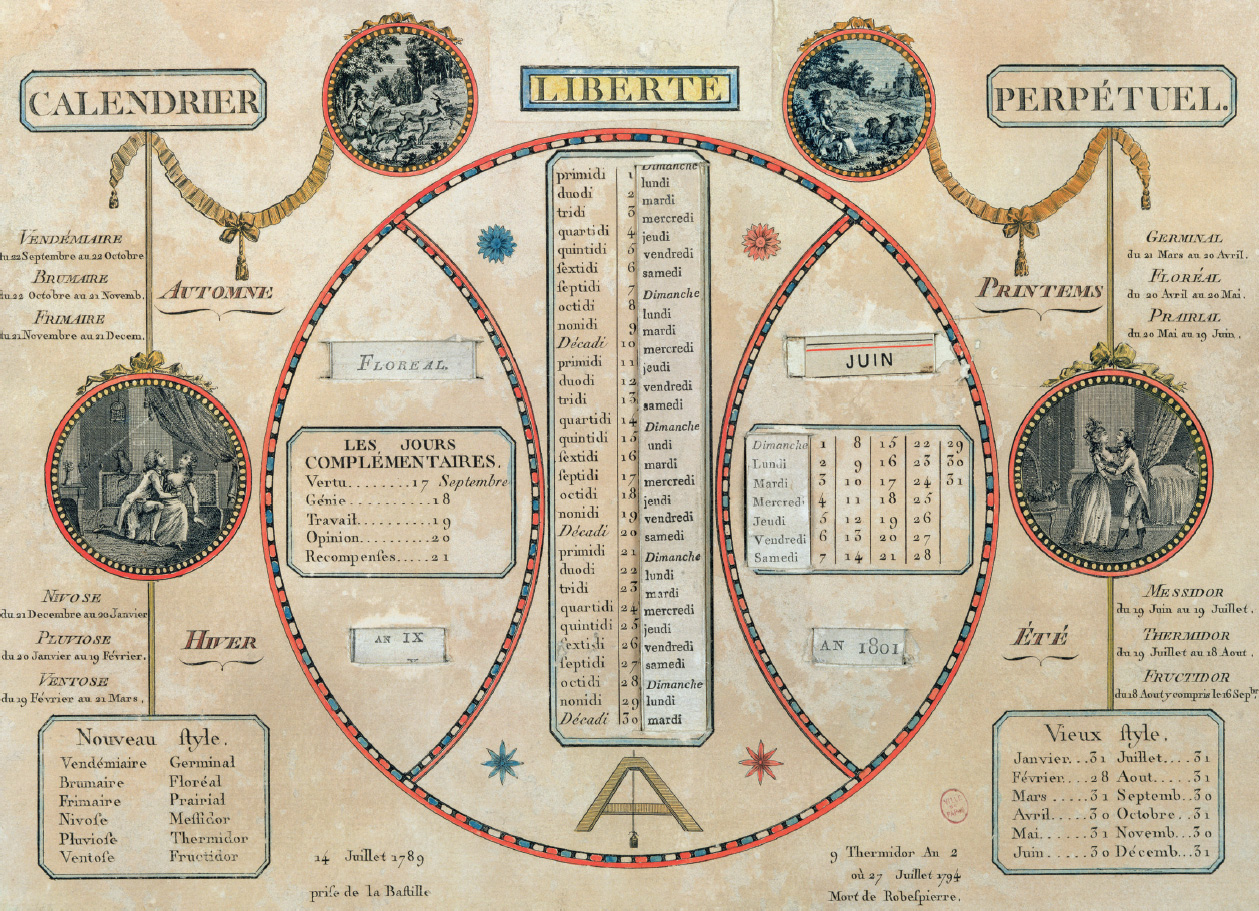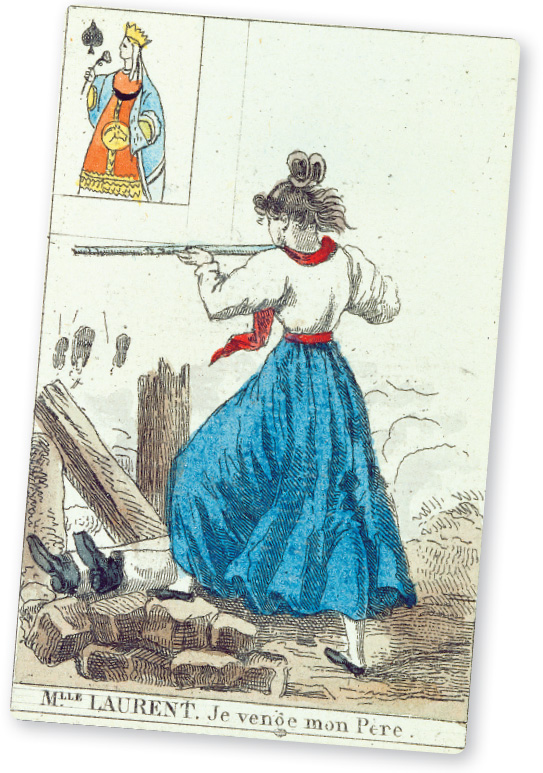A History of Western Society: Printed Page 632
LIVING IN THE PAST
A Revolution of Culture and Daily Life

The French Revolution brought sweeping political and social change to France, removing one of the oldest monarchies in Europe in favor of broad-based representative government and eliminating age-old distinctions between nobles and commoners. Revolutionaries feared, however, that these measures were not enough to transform the nation. They therefore undertook a parallel revolution of culture intended to purify and regenerate the French people and turn former royal subjects into patriotic citizens capable of realizing the dream of liberty, equality, and fraternity.
To bring about cultural revolution, officials of the new republic targeted the most fundamental elements of daily life: the experience of space and time. Prior to the Revolution, regions of France had their own systems of measurement, meaning that the length of an inch or the weight of a pound differed substantially across the realm. Disgusted with the inefficiency of this state of affairs and determined to impose national unity, the government adopted the decimal-based metric system first proposed in 1670. The length of the meter was scientifically set at one ten-millionth of the distance from the pole to the equator. Henceforth all French citizens would inhabit spaces that were measured and divided in the same way.
The government attempted a similar rationalization of the calendar. Instead of twelve months of varying lengths, each of the twelve months on the new revolutionary calendar was made up of three ten-day weeks, with a five- or six-day interval at the end of each year. To mark the total rebirth of time, the new calendar began at Year 1 on the day of the foundation of the French republic (September 22, 1792). A series of festivals with patriotic themes replaced the traditional Catholic feast days. One of the most important was the festival of the Cult of the Supreme Being (a form of deism promoted by Robespierre as the state religion). There was even a short-lived attempt to put the clock on a decimal system.
Cultural revolution also took on more concrete forms. Every citizen was required to wear a tricolor cockade on his or her hat to symbolize loyalty to the republic. Enterprising merchants sold a plethora of everyday goods with revolutionary themes. One could eat from revolutionary plates, drink from revolutionary mugs, waft revolutionary fans, and even decorate the home with revolutionary wallpaper. Living the French Revolution meant entering a whole new world of sense and experience.


QUESTIONS FOR ANALYSIS
Question
How easy do you think it would have been to follow the new revolutionary calendar? Why did revolutionaries believe it was necessary to create a new calendar?
Question
How would you describe the festival of the Supreme Being as it is shown on the plate? What values of the Revolution does it seem to emphasize?
Question
Why were ordinary objects, like plates and playing cards, decorated with symbols of the Revolution? What does this tell you about the ways everyday life was drawn into the experience of revolution?